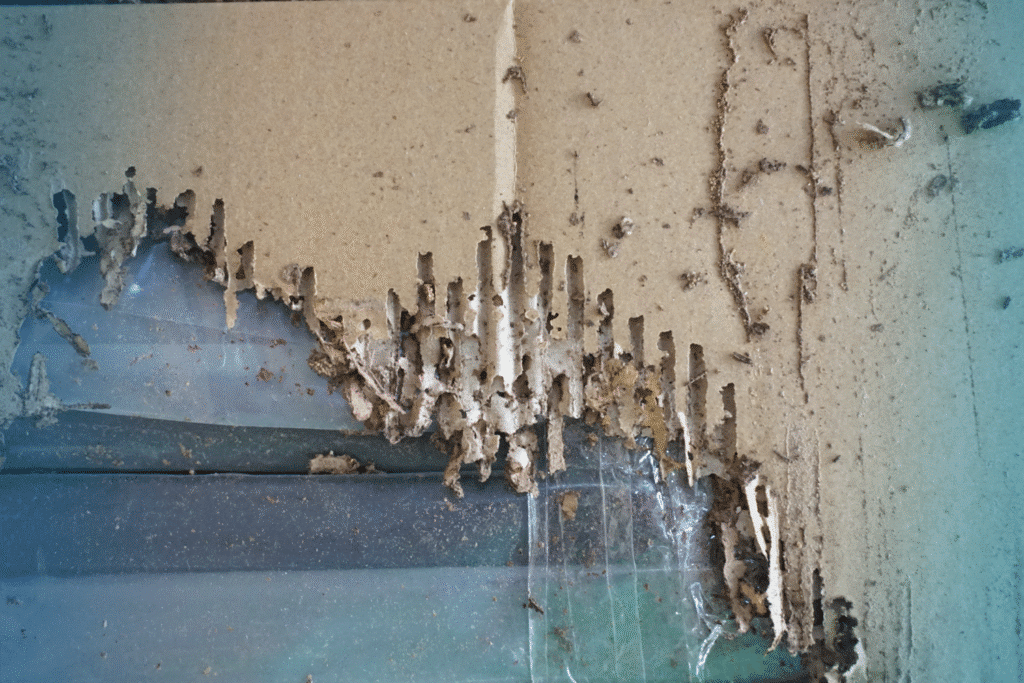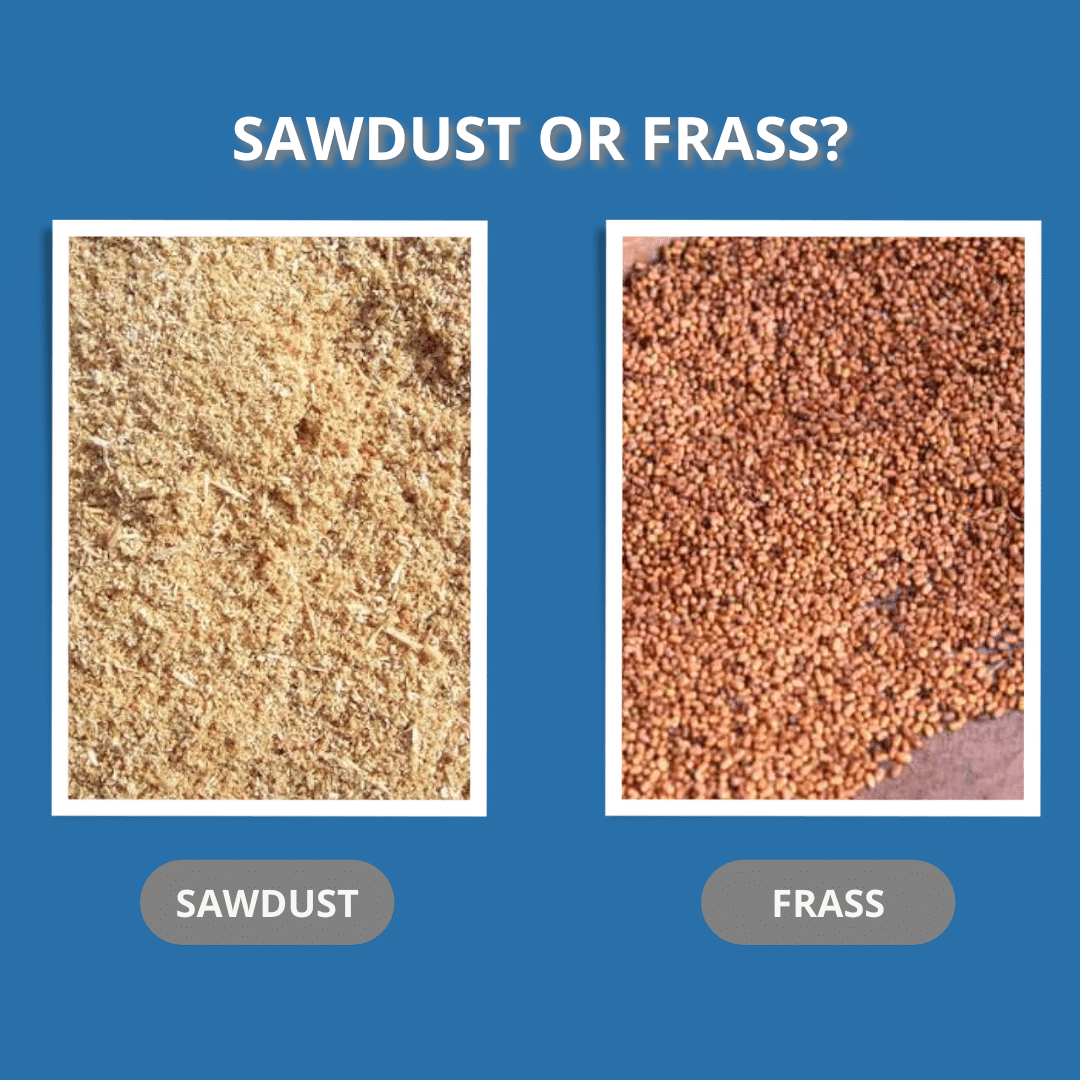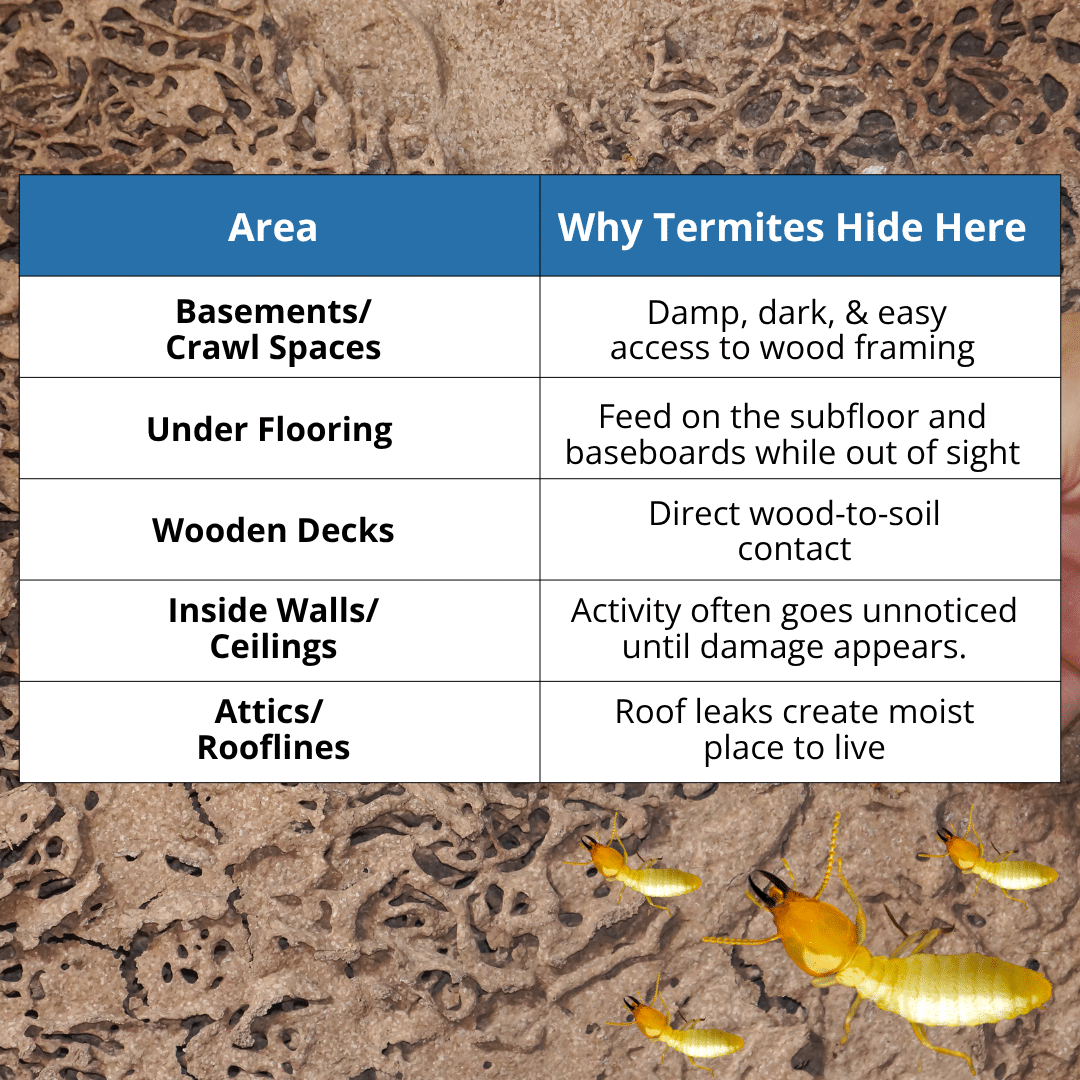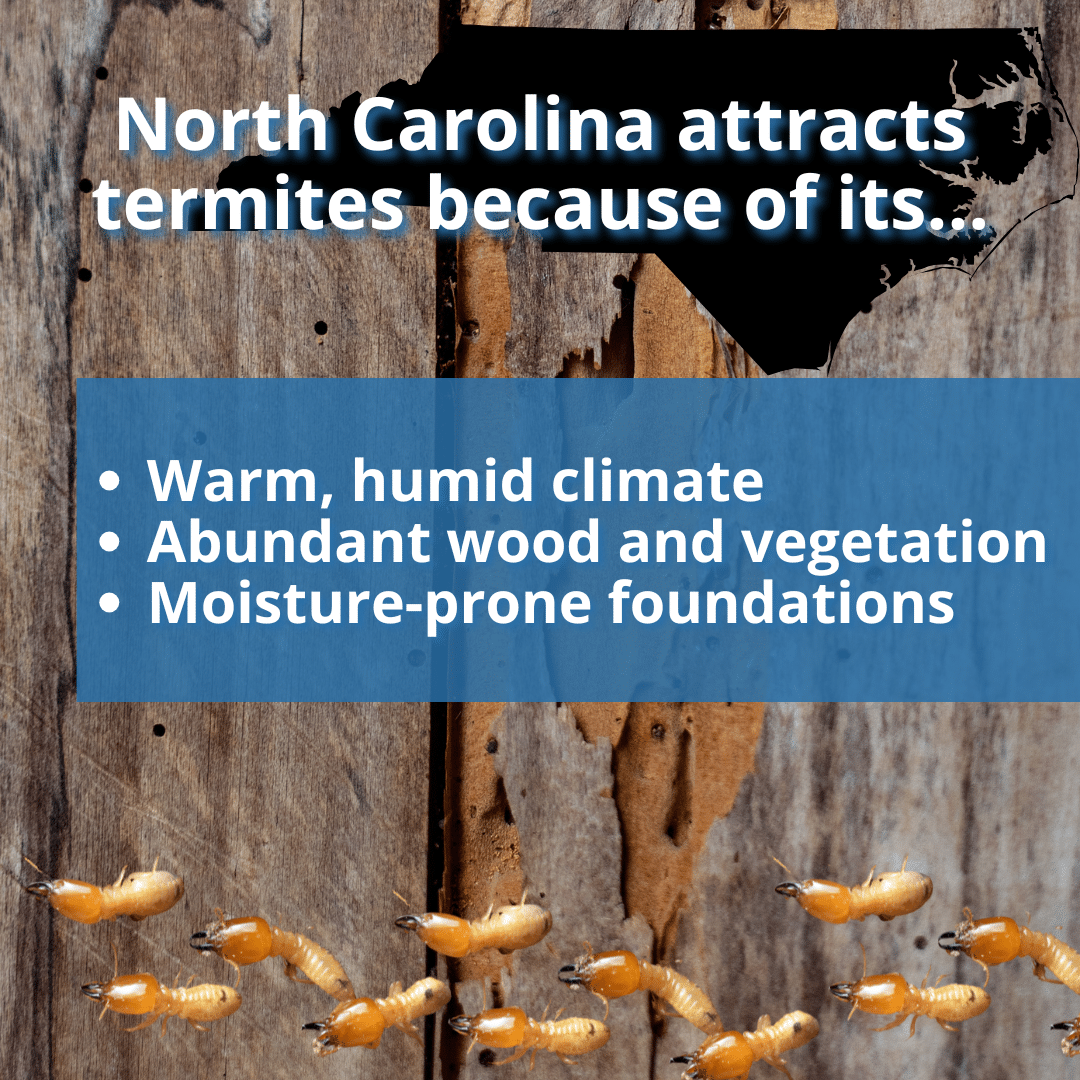
Common Termite Signs and What They Mean for Your Home
Termites are tiny insects, but they can cause massive problems for homeowners. Learning to recognize common termite signs early can save you from expensive repairs.
Each year, they create billions of dollars in property damage across the United States. The biggest challenge is that termites work quietly. By the time most homeowners realize there’s an issue, the damage is already extensive.
When you understand what to look for and where termites hide, you can take quick action to protect your property and prevent future infestations. This article covers the most important signs of termite activity, where they tend to hide in homes, and what each clue means for your home’s health.
What Are the Most Common Termite Signs Homeowners Should Look For?
Termites often hide deep inside wood or soil, but they leave behind physical evidence that can reveal their presence. Here are the key signs every homeowner should know.
1. Mud Tubes
Mud tubes are one of the clearest indicators of subterranean termites. These pencil-sized tunnels are made of soil, saliva, and wood particles. Termites use them to travel safely between their colony and food sources inside your home.
You’ll typically find mud tubes running up your home’s foundation, walls, or crawl space supports. They’re usually brown or tan and can stretch for several feet.
If you gently break one open and see live termites inside, it confirms an active infestation. Even if you don’t see live insects, fresh-looking or rebuilt tubes suggest that termites are still active nearby.
What it means:
Mud tubes indicate a current or recent infestation. They show that subterranean termites have already entered your home and are likely feeding within the wooden structure.
2. Discarded Wings
When a termite colony matures, swarmers (winged termites) leave the nest to start new colonies. Once they land, they shed their wings.
If you find small piles of identical, translucent wings near windowsills, light fixtures, vents, or doors, it’s a clear sign that swarmers have been inside your home.
What it means:
Termite swarmers were active recently, and they may already have started building a new colony. Since swarmers appear during warm, humid weather, seeing wings indoors suggests that your home’s interior may already be infested.
3. Hollow or Blistered Wood
Termites eat wood from the inside out, leaving only a thin outer layer. When you tap on a wall, baseboard, or floor and hear a hollow or papery sound, it likely means termites have eaten away the wood underneath.
Sometimes, the wood surface bubbles or blisters, which many homeowners mistake for water damage. The bubbling occurs when termites tunnel close to the surface, weakening the structure and separating the paint or finish from the wood beneath.
What it means:
The infestation has been active for some time. Termites have likely caused structural weakening that needs professional evaluation.
4. Frass (Termite Droppings)
Drywood termites produce droppings called frass. These tiny, six-sided pellets look like sawdust or coffee grounds and can pile up under baseboards, windows, or infested beams.
Drywood termites push these droppings out of small holes in the wood as they tunnel.
What it means:
Frass means termites are active inside your walls or wooden furniture. Since only drywood termites leave visible droppings, this sign is specific to that species. Ignoring it could allow colonies to expand further into your home.
5. Tight Doors or Windows
If you’ve noticed doors or windows that suddenly stick, it might not be humidity; it could be termites. As termites eat through wooden frames, they produce moisture, which causes wood to swell or warp. This extra moisture can make doors or windows difficult to open or close.
What it means:
Swollen frames suggest active termite activity nearby. While not all warped doors are caused by termites, if you see this along with other signs like mud tubes or frass, you should schedule a termite inspection immediately.
Common Places Termites Hide in Homes
Even when no visible damage exists, termites often nest in areas you rarely check. They thrive in dark, humid, and quiet environments. Knowing these common hiding spots helps homeowners inspect more effectively.
Pro Tip: Use a flashlight during routine checks and inspect around plumbing, crawl space vents, and foundations. These spots are often where infestations start.
Hidden Termite Signs Inside Walls and Crawl Spaces
Some termite activity happens deep inside your home where you can’t see it. Still, there are subtle clues that point to hidden infestations.
- Clicking or rustling noises: Worker termites make faint noises while chewing through wood. You may hear these sounds at night when your home is quiet.
- Peeling paint or bubbling wallpaper: These occur when termites tunnel close to the surface, separating the paint layer from the wood underneath.
- Sagging floors or ceilings: As termites eat away support beams, the structure can weaken and cause noticeable sagging.
- Musty or earthy odors: Termite-infested wood often smells like mold or damp soil due to trapped moisture and decaying wood.
What it means:
These subtle clues suggest termites are active behind walls, under floors, or within crawl spaces. Ignoring them can allow damage to spread to your home’s foundation or structural supports.
DIY Checks vs. Professional Termite Inspections
Homeowners can perform simple visual checks, but termites are skilled at hiding. Without specialized equipment, you could miss early warning signs.
DIY Checks You Can Try
- Tap on exposed wood to listen for hollow or papery sounds.
- Look for mud tubes along foundation walls, drywall, and crawl spaces.
- Inspect window sills, vents, and basements for piles of wings.
- Check outdoor wood structures for cracks or visible damage.
These checks can help you notice surface-level problems. However, they won’t reveal colonies deep inside walls or under your home.
Why Professional Inspections Are Better
Licensed termite inspectors have the training and tools to detect hidden infestations. They use moisture meters, infrared cameras, and borescopes to identify activity inside walls or floors.
They also know how to tell the difference between old, inactive damage and live colonies.
A professional inspection not only confirms whether termites are present but also evaluates the extent of the damage.
Q&A Home Inspections provides detailed reports that explain what was found and the best treatment or prevention steps moving forward.
Preventing Termite Damage After Spotting Signs
Once an infestation has been handled, prevention is the best defense. Termites thrive in damp, wood-rich environments, but simple home maintenance can help keep them away.
Effective Termite Prevention Tips:
- Keep wood and mulch away from your foundation. Maintain a gap of at least twelve inches between the soil and wooden siding.
- Reduce moisture. Repair leaky pipes, downspouts, or irrigation systems that keep soil damp.
- Seal gaps and cracks. Fill openings in the foundation and around utility lines to prevent entry.
- Store firewood correctly. Keep it off the ground and at least twenty feet from your home.
- Trim back vegetation. Shrubs or trees that touch your home can give termites easy access.
- Schedule regular inspections. Professional termite checks once or twice a year can detect early signs before damage spreads.
Local note: Because of North Carolina’s humid climate, termites stay active nearly all year. Regular inspections and moisture control are essential for keeping them away.
Related Questions
How long can termites go undetected?
Termites can live and feed inside walls or floors for three to eight years before visible damage appears. Since they work quietly, annual inspections are crucial to catch activity early.
Are termites active year-round in North Carolina?
Yes. While swarm activity increases in spring, subterranean termites remain active all year long in warm, humid, and moist conditions.
What’s the difference between drywood and subterranean termites?
Drywood termites live completely inside dry wood and produce frass. Subterranean termites live underground and rely on moisture, building mud tubes to reach wood above ground.
How can I tell if termite damage is old or active?
Fresh mud tubes are soft and damp, while old ones are dry and brittle. However, termites rebuild quickly, so a professional inspection is the only reliable way to confirm activity.
When to Call a Professional
If you spot any of the signs mentioned above, it’s time to contact a licensed termite inspector. You should also call if:
- You hear clicking or rustling inside the walls.
- Wooden surfaces sound hollow when tapped.
- You find piles of wings or termite droppings indoors.
- Floors or ceilings start to sag unexpectedly.
Q&A Home Inspections offers comprehensive termite inspections designed to detect activity early and protect your home’s structure.
Their inspectors understand North Carolina’s unique termite challenges and can help you address them with confidence.
Conclusion
Recognizing common termite signs is one of the most important steps in protecting your home. Whether you notice mud tubes, hollow wood, or discarded wings, each sign means it’s time to take action.
Ignoring these signs can lead to severe structural damage and costly repairs. The good news is that early detection and professional inspections can make all the difference.
If you suspect termites or simply want peace of mind, schedule a professional termite inspection with Q&A Home Inspections. Their experienced team will identify any hidden issues, explain your options, and help you keep your home safe and termite-free for years to come.


